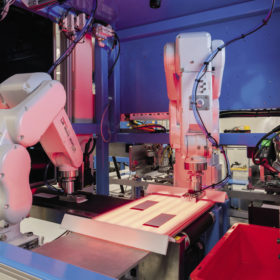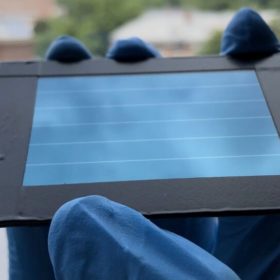Solar-powered hydrogen under $2/kg by 2030
Researchers from the Massachusetts Institute of Technology have identified sites where hydrogen could be produced via PV electrolysis at prices ranging from $1.90/kg to $4.20/kg in the United States by the end of the decade.
The long read: The state of solid-state batteries
Solid-state batteries hold the potential to overcome many of the limitations of today’s lithium-ion storage technologies. Though they have been a research topic for more than 30 years, and more recently have seen billions of dollars poured into their development by leading carmakers and electronics giants, commercial development is still extremely limited. Major roadblocks remain in the way of both device performance and industrial-scale processing. pv magazine recently caught up with solid-state’s research community for a look at where the technology stands.
Energy storage investment to approach $10bn in 2025
Analyst IHS Markit has predicted storage will rebound this year following its first year-on-year decline in 2019. The technology is being rolled out at pace despite Covid-19 with state-level policies set to keep the US the global capital for the next five years.
ISA to hold World Solar Technology Summit next month
The inaugural event will be attended by prime minister Narendra Modi, ministers from all the International Solar Alliance member countries and high-level dignitaries from global R&D institutions.
The long read: Independently evaluating battery quality
Companies investing in battery energy storage have historically relied on trust in the major brands supplying the batteries and complete systems. However, with the absence of international manufacturing quality standards, increasing price pressure on major brands, and the proliferation of low-cost manufacturers, buyers and investors are being forced to address quality risks with batteries. Ian Gregory and Benjamin Sternkopf of PI Berlin discuss the need for independent quality assessment in energy storage.
Battery manufacturing capacity set to increase fourfold to 1.3 TWh by 2030
Analysts at Wood Mackenzie have looked at plans for the incoming decade and concluded that about 119 manufacturing sites will be up and running by 2030. China currently sits firmly in the driving seat, with Asia Pacific comprising 80% of global manufacturing capacity, but Europe is catching up.
The long read: Advanced lead batteries for microgrids
With demand for cleaner forms of energy and a greater need for flexibility and reliability in the power supply, the role of battery energy storage is critical. Innovation in battery technology is essential to match demand growth and the shift in technical requirements. Predictions of 400,000 MWh of battery storage required by 2025 means that all battery technologies will play a role in contributing to a clean energy future.
‘Spontaneous de-doping’ for 17.8%-efficient perovskite mini-module
U.S. scientists have found a new ‘de-doping’ process in perovskite solar cells that could cut production costs and produce better devices. They have used this to fabricate a mini-module with 17.8% efficiency.
Strategies to prevent overvoltage-induced inverter disconnections
Australian scientists have identified seven methods to prevent PV losses when overvoltage-induced inverter disconnections occur. The methods include battery storage, reactive power inverters, export limits, distribution static synchronous compensators, the replacement of old conductors in power grids, load reconfiguration, and dynamic voltage restoration.
Microsoft trials hydrogen-powered data centers
The software giant has begun testing hydrogen fuel cells as a back-up power source at one of its U.S. data centers. A 250 kW pilot system successfully powered part of the facility for 48 hours and the company is now eyeing 3 MW systems to replace back-up diesel generators.















